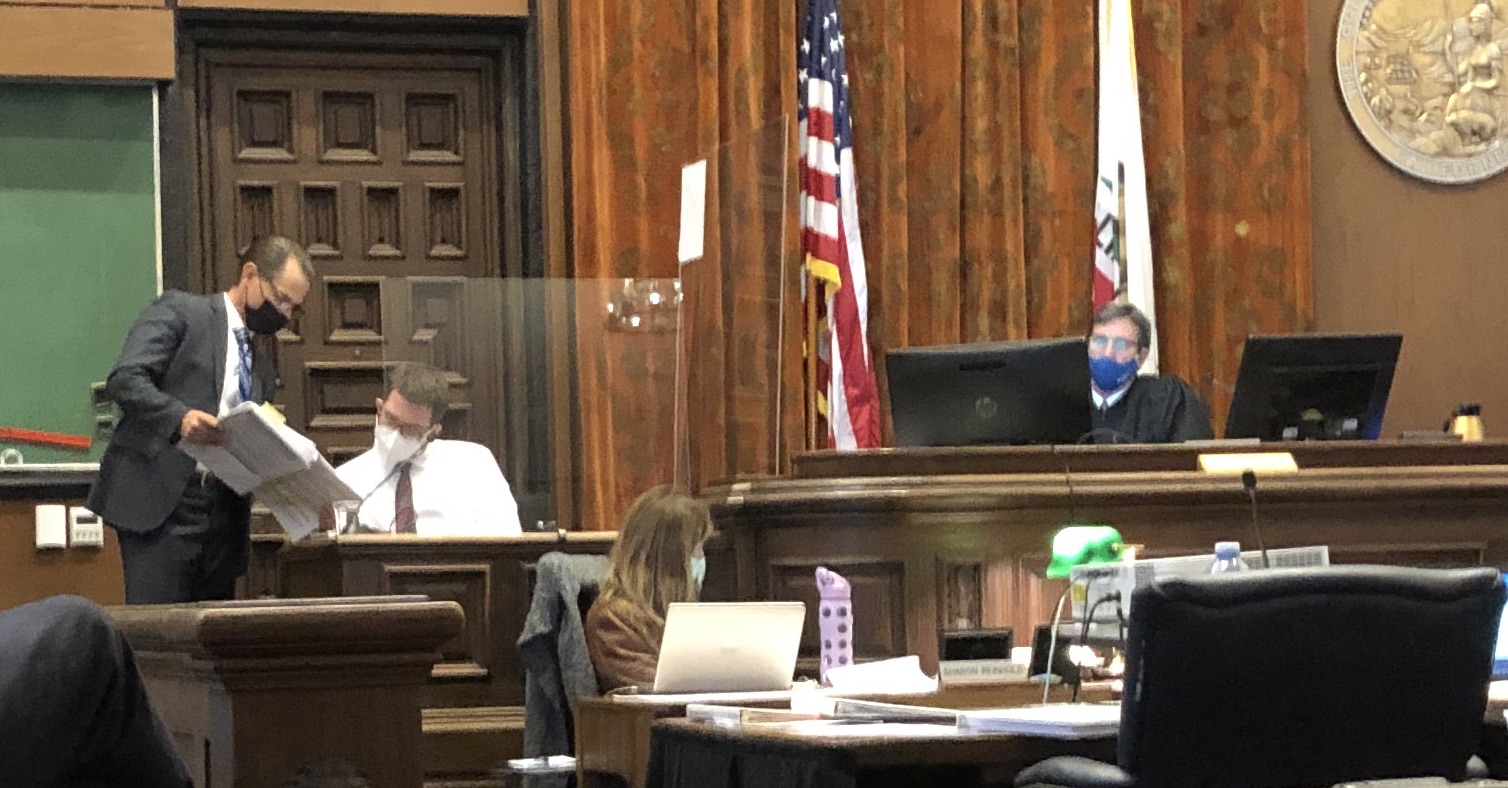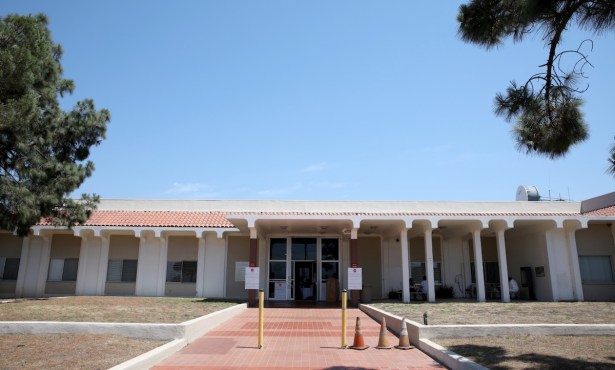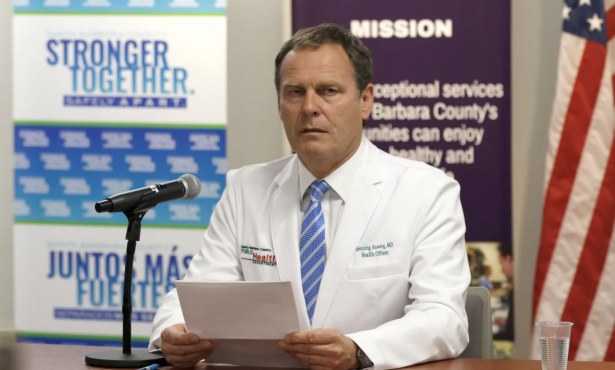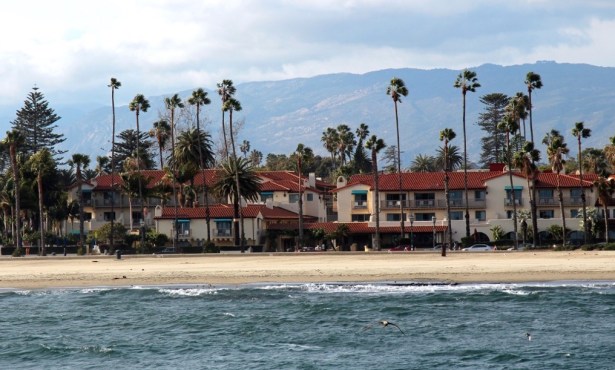Haobsh Spins a Story on the Stand
Accused of Triple Murder, Alleged Killer Gives His Version of Evidence

If the majority of Tuesday’s testimony is to be believed, Pierre Haobsh has invented a machine that creates perpetual energy, an invention so revolutionary the Department of Energy (DOE) would stop at nothing to prevent its release. This information came from a loquacious Haobsh, who took the witness stand to offer alternatives to some of the evidence connecting him to the death of Dr. Henry Han, an entrepreneur and respected herbalist who was killed on March 23, 2016, with his wife, Jenny Yu, and their daughter, Emily, who was 5, at their home in the Santa Barbara foothills.
As his attorney Christine Voss asked questions, Haobsh talked about his life in great detail. He described being a bodybuilder who ate every three hours, day and night, and whose physique attracted women at the beach when he doffed his shirt and lounged in a Speedo. He described close calls he’d had, as when five or six DOE operatives broke into his bedroom in Arizona. He reached for his Sig Sauer, and he killed them all, he said. Yes, he’d bought plastic sheeting at Home Depot, but it was to use as drop cloth for when he painted an energy machine for Henry Han. That’s why the sheeting and the duct tape used to hide the bodies had his fingerprints on them, he said.
To account for the entry of the Han home address into his car’s mapping system on the morning of the murders, Haobsh first described how two people in “crotch rocket attire” had fired a rifle at him in the parking lot of the iHop in Noleta. It happened to be a location that placed the Han house between him and a cell tower that pinged his location as he drove “nonstop” in fright, trying to figure out who was trying to kill him. In so doing, he accidentally “brushed” a button that gave the location of the Han’s home, he said.
Haobsh then told a long and complicated story about how he came to text his friend T.J. Direda that he was screwed and his life was over, a text Direda took to mean he’d killed the Hans. According to Haobsh, he’d stored an energy machine at Direda’s warehouse earlier, rented a truck in Tarzana to pick the equipment up after the murders, but found the warehouse empty. Along the way, he’d left his car and his cell phones at the rental lot, using a disposable phone instead, which could not text. He asked another friend, electronic surveillance expert John Inlow, to text Direda that he was screwed and so on. As he drove some more, he was followed by a white SUV like one he’d noticed at the truck rental lot. Inlow told Haobsh the tracker on his cell phone was moving, and Haobsh asked him to sound its alarm. A hand appeared out the window of the SUV and threw a cell phone onto a “grassy knoll” along the freeway, which Haobsh retrieved. In answer to Voss’s question asking what he thought was going on, Haobsh replied it was a chess match between himself and the Department of Energy.
At the mid-afternoon mark, prosecutor Benjamin Ladinig launched a counteroffensive, asking Haobsh if he really thought anyone would believe him and if he’d been called a bullshitter or con artist before. Ladinig told of the interviewee who’d called Haobsh a “rattlesnake,” several who called him a liar, and one who called him an “evil dude” capable of killing people. To all these, Haobsh offered no denials; to many, he asked to see the written statements. He said “rattlesnake” was a compliment from that individual and added he’d had a falling out with all those people.
Sign up for Indy Today to receive fresh news from Independent.com, in your inbox, every morning.
The “falling out,” Ladinig scoffed, was because Haobsh had defrauded them of $400,000. His investors were surprised to find his energy machine was connected to a car battery, Ladinig said. Yes, Haobsh replied calmly, it needed power to get started. At a second demonstration, one investor discovered it was connected to an underground power line outdoors. Haobsh disagreed, saying that outdoor line went to some lights.
Haobsh would have been the first in mankind to produce such a device, Ladinig proclaimed, but Haobsh replied that people at the Department of Energy had the technology — they just hadn’t been able to bring it to market for political and national security reasons. This led to questions about Haobsh’s military record, which extended over six weeks in the U.S. Army in 2014. Shortly after that, Haobsh said, he worked for eight or nine months at Sector 9, an underground base in Nevada or Arizona. He wasn’t sure where because he’d been flown there in the middle of the night.
The prosecutor then began to pick at Haobsh’s ego, asking him about his success with the ladies as a body builder, and why he discussed plastic surgery with his sister. Haobsh replied he was a perfectionist, seeking an ideal weight of 240 pounds and 4 percent body fat. Ladinig then questioned Haobsh about telling Direda a woman had “taken me to the cleaners” for $10,000 and not even slept with him. Haobsh said he’d met her on a dating site. “What’s it called?” asked Ladinig. “WhatsYourPrice.com,” Haobsh replied, whereupon one of the 18 people attending court via Zoom gasped, “Jesus.”
Ladinig’s point was that Haobsh was broke but sending texts showing his bank account to hold $940 million and $85 million. At the time of the murders, it was actually around $500, he said. Haobsh said he’d lied to the woman because he’d wanted her to think he was successful, then fearing he was being used, told her he was broke. He argued that those records could have been doctored by anyone other than himself, citing keystrokes and Photoshop techniques, especially by an agency with skills like the DOE.
“Who altered them?” Ladinig asked.
“I don’t know,” said Haobsh.
“Who killed the Hans?” Ladinig asked next.
“I don’t know which individuals,” said Haobsh. He just knew what was going on around him, he said, and the DOE was involved. He’d written letters to the prosecutors, Judge Brian Hill — who is adjudicating the case — the sheriff, and Donald Trump, saying six to 12 operatives from the DOE, in a clandestine unit, did the murders, Ladinig described. Why would the DOE murder the Hans when it was Haobsh who was the threat with his energy machine? he asked. Henry Han had one of the devices; it was like killing two birds with one stone, Haobsh said.
Both sides are likely to sum up their cases on Wednesday, right before the Thanksgiving holiday. It will then be up to Judge Hill to decide which version of events to believe.
Support the Santa Barbara Independent through a long-term or a single contribution.



